Before dawn, as the clock strikes 5:00 a.m., Ardian Zena looks up at the dark sky through a window with no protective bars. The color of the sky brings back memories of the past. But there is no time to waste now. Without the orange vest characteristic of prisoners, Zena, from the village of Radosta in Rahovec, opens his locker, takes his personal belongings, and leaves the ward to carry out some administrative procedures. This is how his daily routine begins, as it has for over two years now, since he was transferred to the Smrekonica Correctional Center, an open prison.
“I work as a metal welder in a company in Gjakova. To arrive and start work at 8:00, I have to get up early,” said the 43-year-old. After signing a document at the institution’s counter, he heads to his personal car to go to work.
Zena covers over 180 kilometers every day while driving, temporarily enjoying his conditional freedom.
“It is tiring, but I see myself as free. The goal is not to remain passive, and to maintain a habit of working, to help my family financially, at least a little,” he said, adding that the opportunity to work outside the center was one of the main reasons he requested a transfer to Smrekonica.
Zena is serving a 25-year prison sentence for murder. He spent one year in the Prizren Detention Center, eight years in Dubrava Prison, and almost another eight years in the High Security Prison in Dyz. For more than two years, he has been at the Smrekonica Correctional Center.
“I am here to pay the penalty for the crime I committed. I have realized my mistake; now I have to work to improve myself and contribute something to society. I will never break the law again,” he added.
Zena explained that the work he does today, aluminum welding, is very demanding. Still, he completed professional training for this profession while in Dubrava Prison. “I completed the training in prison, I saw the benefit of it, and today I am paid for this work,” he said.
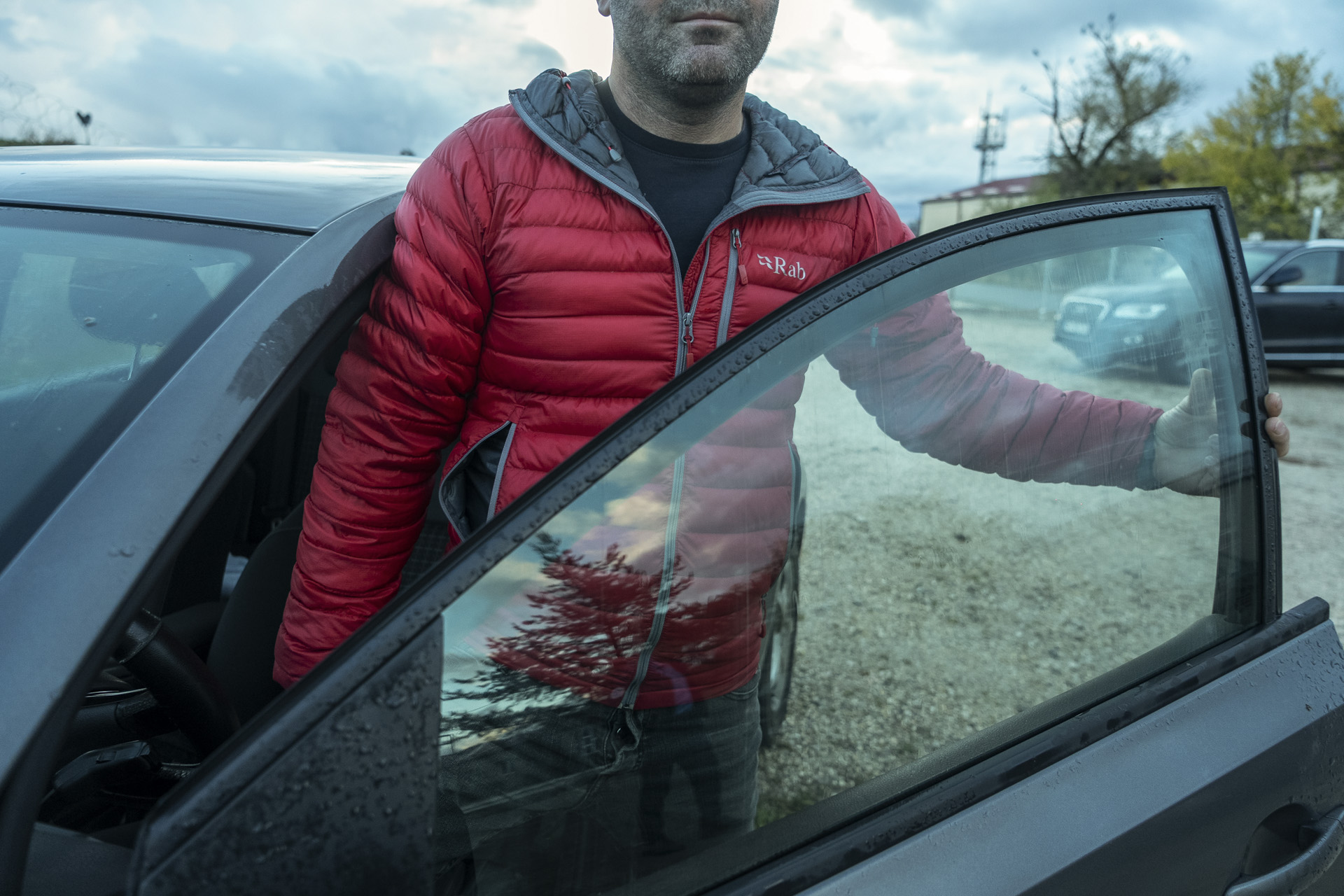
Ardian Zena, 43, travels over 180 kilometers to his workplace outside the Smrekonica Center every day. Photo: Ferdi Limani / K2.0
He has never felt discriminated against in the company where he works. On the contrary, the staff try to help him and maintain excellent communication.
Like Zena, 25 other convicts at Smrekonica start work outside the center at 8:00 and finish at 16:00.
Most convicts who work outside are employed in restaurants, various factories, welding, carpentry or other crafts. Their salaries range from 500 to 600 euros. By 17:30 at the latest, all convicts must return to Smrekonica. Upon their return, they resume their lives inside the correctional center, alongside approximately 75 other convicts who spend their entire day within the facility.
“Since they are not at breakfast and lunch, when they return, they continue the routine with cleaning their rooms, making phone calls, doing laundry and having dinner — just like everyone else,” said Agron Hamza, head of legal and general affairs at the Smrekonica Correctional Center. Hamza, who has been part of the Kosovo Correctional Service since 2005, considers the opportunity to work outside the center a very positive development.
According to him, this type of benefit, which allows convicts to connect with life outside prison, prevents them from abusing the opportunity. “Everyone demonstrates good behavior and commitment to work; no one refuses the staff’s orders because they have these benefits,” said Hamza, who worked at Dubrava Prison from 2005 to 2010.
However, Smrekonica is an exception to the usual reality of prisons in the country.
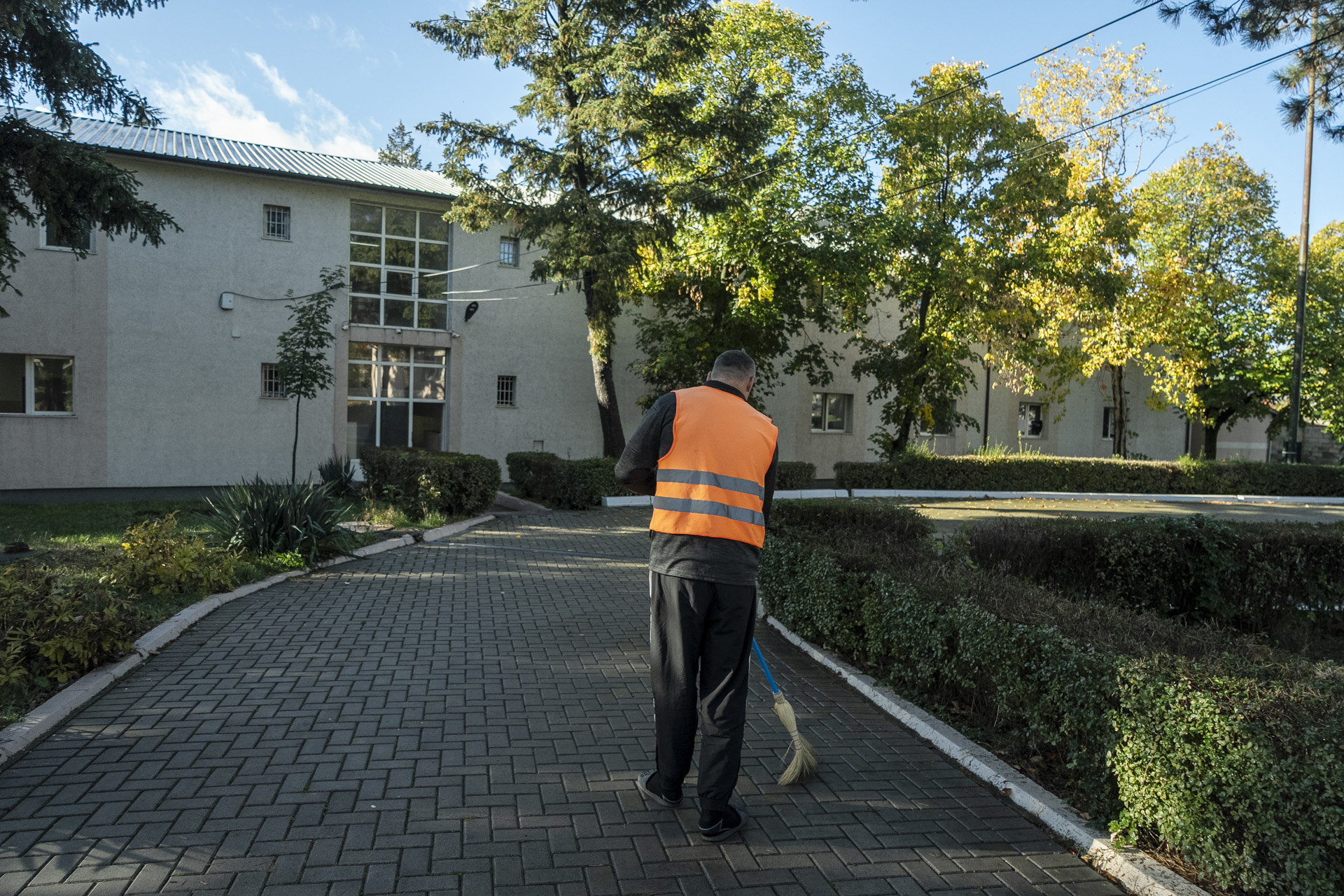
Around 90 convicts are serving their sentences at the Smrekonica center. Photo: Ferdi Limani / K2.0
From punishment to rehabilitation
According to the Law on Correctional Services, Kosovo has three types of centers, categorized by a level of security: closed, semi-open, and open centers. Closed institutions have maximum security, with high walls and armed staff. Semi-open institutions have medium security, while open centers have lower security, and the behavior of convicts is guided by discipline and personal responsibility.
In Kosovo, the facilities that are open are Smrekonica and a center dedicated to juveniles. Semi-open institutions include the correctional centers for women and juveniles in Lipjan, while closed institutions include the centers in Dubrava, the detention centers in Prishtina, Prizren, Gjilan, Peja, Mitrovica and the High Security Prison. Even in non-open centers, however, there are semi-open and open wards where convicts who meet the legal requirements are placed.
The daily life of prisoners in the country’s correctional institutions, including their rights and privileges, is regulated through the Treatment Regulation. Treatments in this regulation are levels that determine prisoners’ rights and privileges, from the level of reception — when a prisoner enters a correctional center — to the advanced level, which enables transfer to semi-open and open centers.
The transition from one treatment level to another is made only after assessing whether the prisoner has demonstrated dedication to work, good behavior and cooperation. These treatment levels are designed as processes that encourage convicts to maintain good behavior, offering the opportunity to benefit from various privileges and advantages.
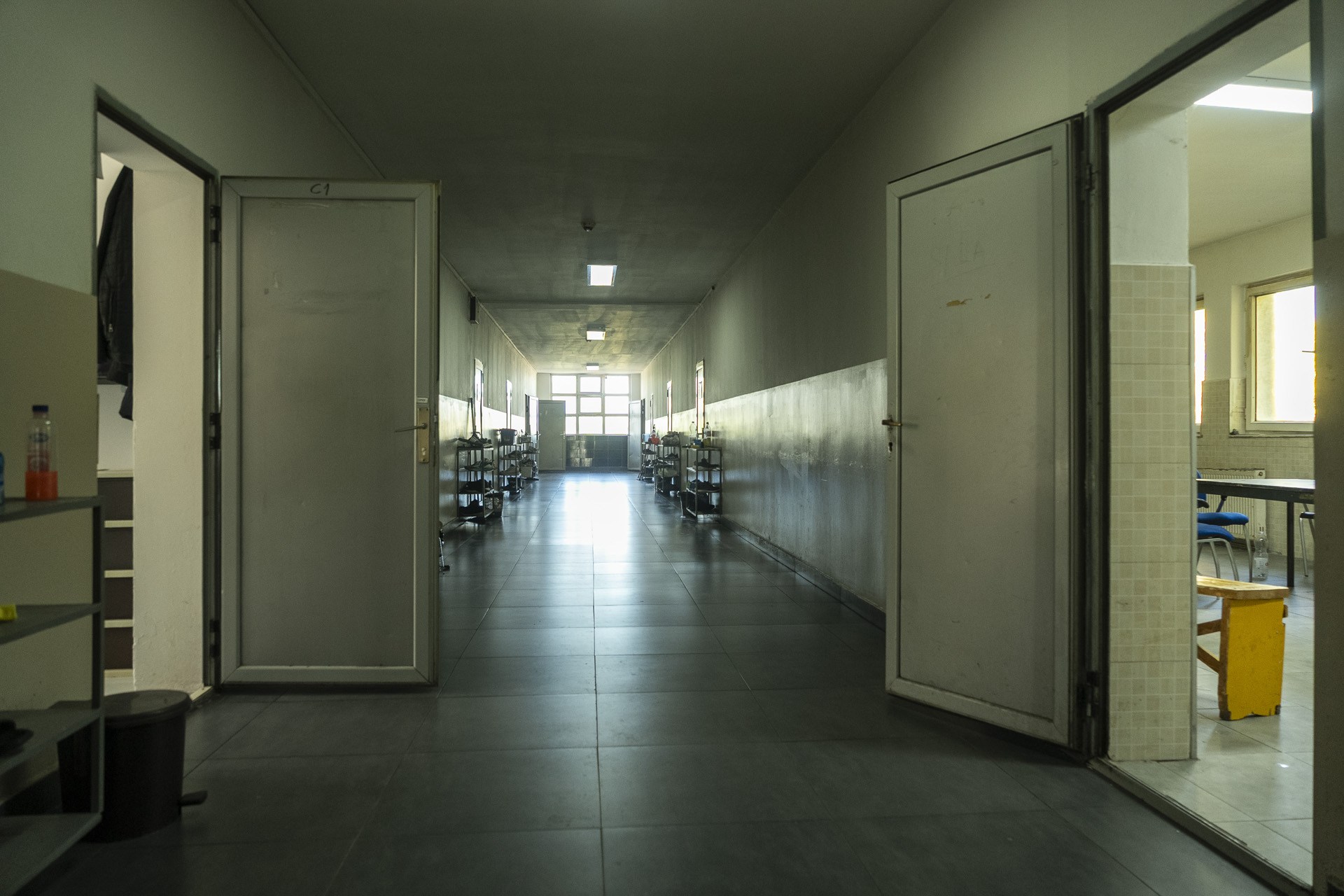
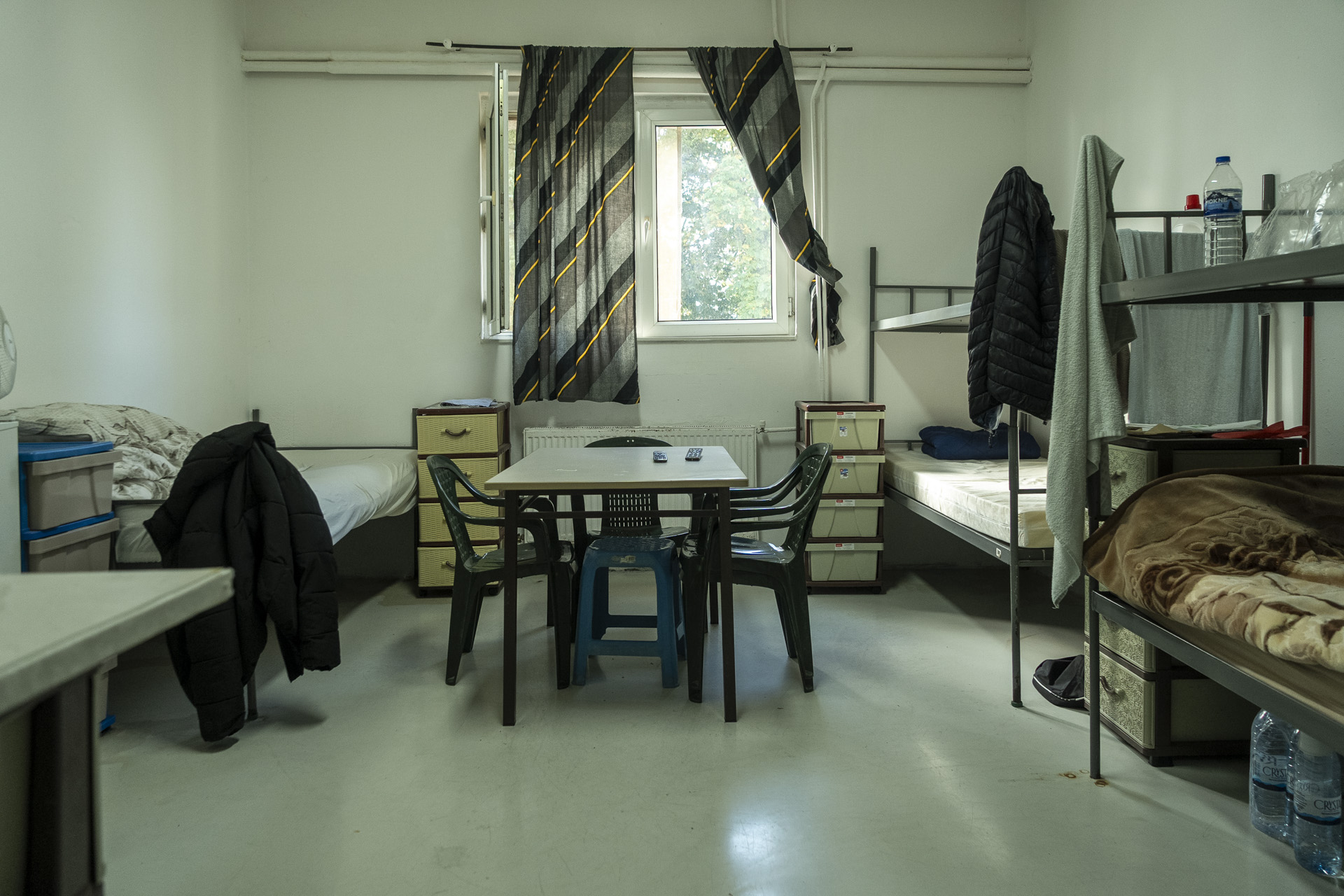
About 75 convicts, who do not yet have permission to work outside the center, spend the entire day within the perimeters of the institution. Photo: Ferdi Limani / K2.0
The Kosovo Correctional Service (KCS) has focused on the resocialization and re-education of convicts in two main aspects. The first includes rehabilitation programs, vocational training, cultural and sports activities, and work inside and outside the institution, all aimed at mitigating the negative effects of isolation and reducing recidivism. The second aspect involves vocational training, providing convicts with the opportunity to learn various professions and obtain certifications that are valid for work outside the centers.
“Prisoners are involved in employment inside and outside the institutions, in primary and secondary education, as well as in professional training in various fields such as electrical installation, plumbing, heating, tailoring, auto mechanics, cooking, welding, carpentry and construction,” said Florent Gashi, spokesperson for the KCS.
The last two stages before full release allow placement in semi-open and open wards. To be transferred to a semi-open ward, a convict must have no disciplinary sanctions and be ready for work. Upon transfer to a semi-open ward, the convict is entitled to four visits per month, as well as breaks outside the center.
For transfer to the final stage — where visits increase from four to eight and convicts can spend weekends outside in open centers such as Smrekonica, or open-type units within (semi-)open centers — the assessment is made by the institution’s professional team. Convicts must not have a sentence longer than 10 years or more than 10 years remaining, must have no other criminal offenses to serve and must have reached the stage where they can take breaks outside the centers. In this final phase, after meeting all other conditions, convicts are permitted to work outside the center as preparation for life after prison. Work outside the Smrekonica Correctional Center, which began in 2019, is now also regulated by an Administrative Instruction drafted in 2023.
In addition to conditions related to the remaining sentence and the probationary phase, another requirement for a convict to work outside the center is that they have secured employment unrelated to the criminal offense for which they were convicted. They must also obtain a recommendation from the professional panel established by the institution’s director, following the approval of the request.
After the decision, contracts are signed, stipulating strict conditions that must be followed by both the employer and the convict. These include financial compensation, adherence to working hours, provision of transportation and other requirements. To ensure compliance, the correctional institution conducts an initial visit to the workplace and is then required to carry out additional unannounced visits to verify that the agreement is being fully implemented. There is, however, also the possibility that a work permit may be revoked.
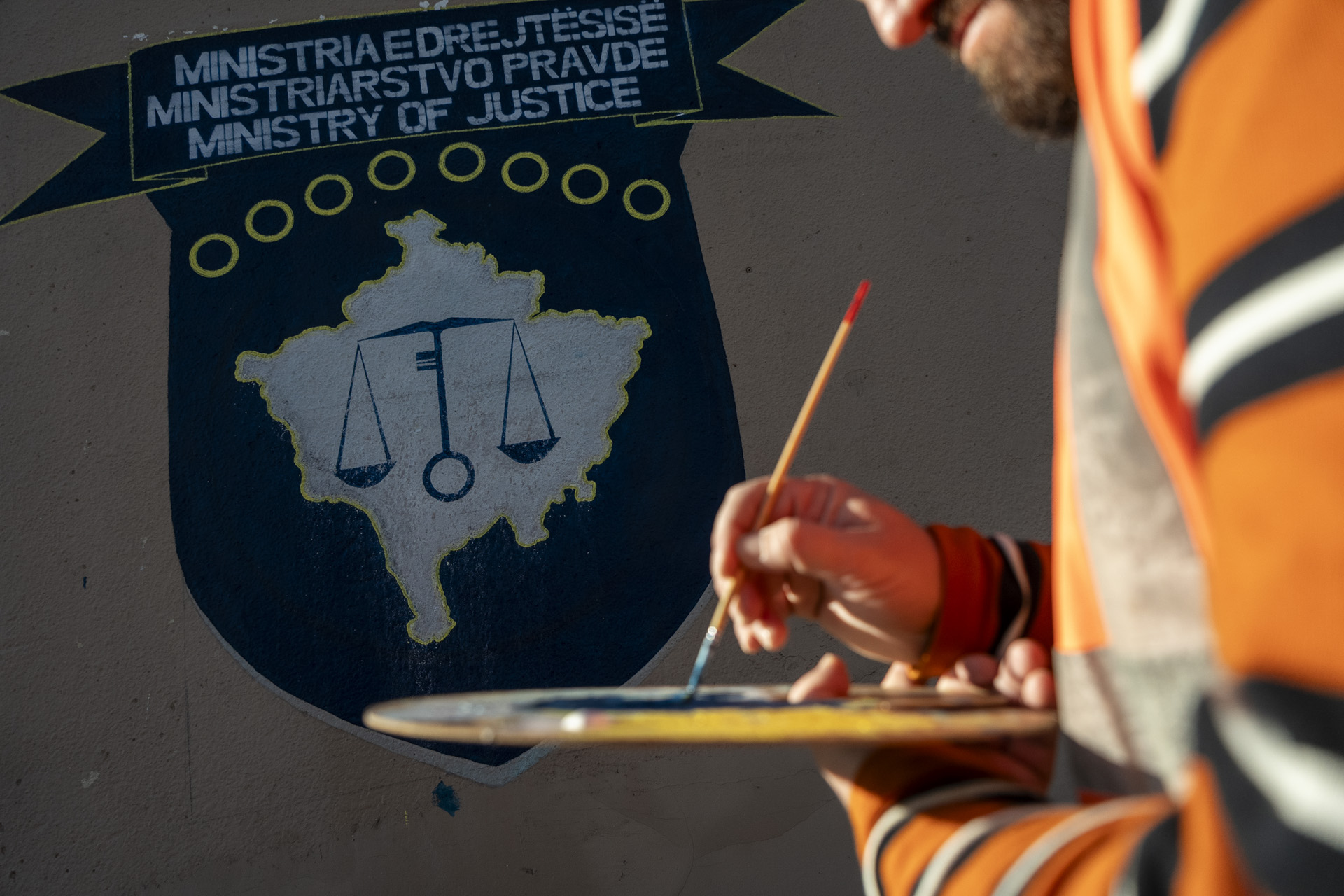
The rehabilitation of prisoners in preparation for life after prison is a key feature of the Scandinavian model, which views imprisonment as a deprivation of liberty, but not of dignity or opportunities. Photo: Ferdi Limani / K2.0
Working outside the institution is one of the key practices for the resocialization of prisoners in many countries, demonstrating an approach that sees prison not just as a form of punishment, but as an opportunity for rehabilitation.
Jeton Brajshori, a sociologist, similarly argues that the reintegration of prisoners is essential. According to him, prison should not be seen solely as a punishment that treats prisoners as outsiders, but also as an opportunity to help prisoners reintegrate into society. He cites Scandinavian countries, such as Norway and Sweden, as examples where reintegration is prioritized over punishment.
“Open prisons are a good idea and a more humane way to treat prisoners. The opportunity to go out to work, maintain contact with society and reduce isolation makes the transition after release easier. Essentially, they prepare prisoners for real life, giving them responsibility and practical skills,” said Brajshori.
In Sweden and Norway, open prisons are a key part of a broader penal philosophy that views imprisonment as a deprivation of liberty, but not of dignity or opportunity. Institutions such as Bastøy Prison in Norway operate on the principle that preparation for life after prison begins long before a sentence ends. Prisoners work, attend vocational and therapeutic programs, and live in conditions that resemble life outside — in small, fenced-off houses with shared responsibilities and minimal security. The aim is to reduce recidivism through trust and responsibility, rather than control and fear.
In Sweden, prisons are classified into three security levels: level one is high security, level two is medium security and level three is lower security, or an open prison. Before a sentence begins, institutions conduct a risk assessment to determine the appropriate level for each prisoner, which then guides their participation in established programs. Similar to the Kosovo system, Sweden’s open prisons serve as the final stage of imprisonment, preparing convicts to reintegrate into society through work outside prison, controlled contact with family and the development of daily life skills.
In Swedish prisons, prisoners have access to a variety of programs. Training programs are tailored to the individual’s past issues or the type of offense for which they have been convicted. These programs are behavior-based and aim to identify factors that contribute to recidivism. For the programs to be effective, however, prisoners must be willing to participate. The goal of this three-level system is to gradually shift from control to responsibility, so that prisoners learn to function independently and are less likely to reoffend upon release.
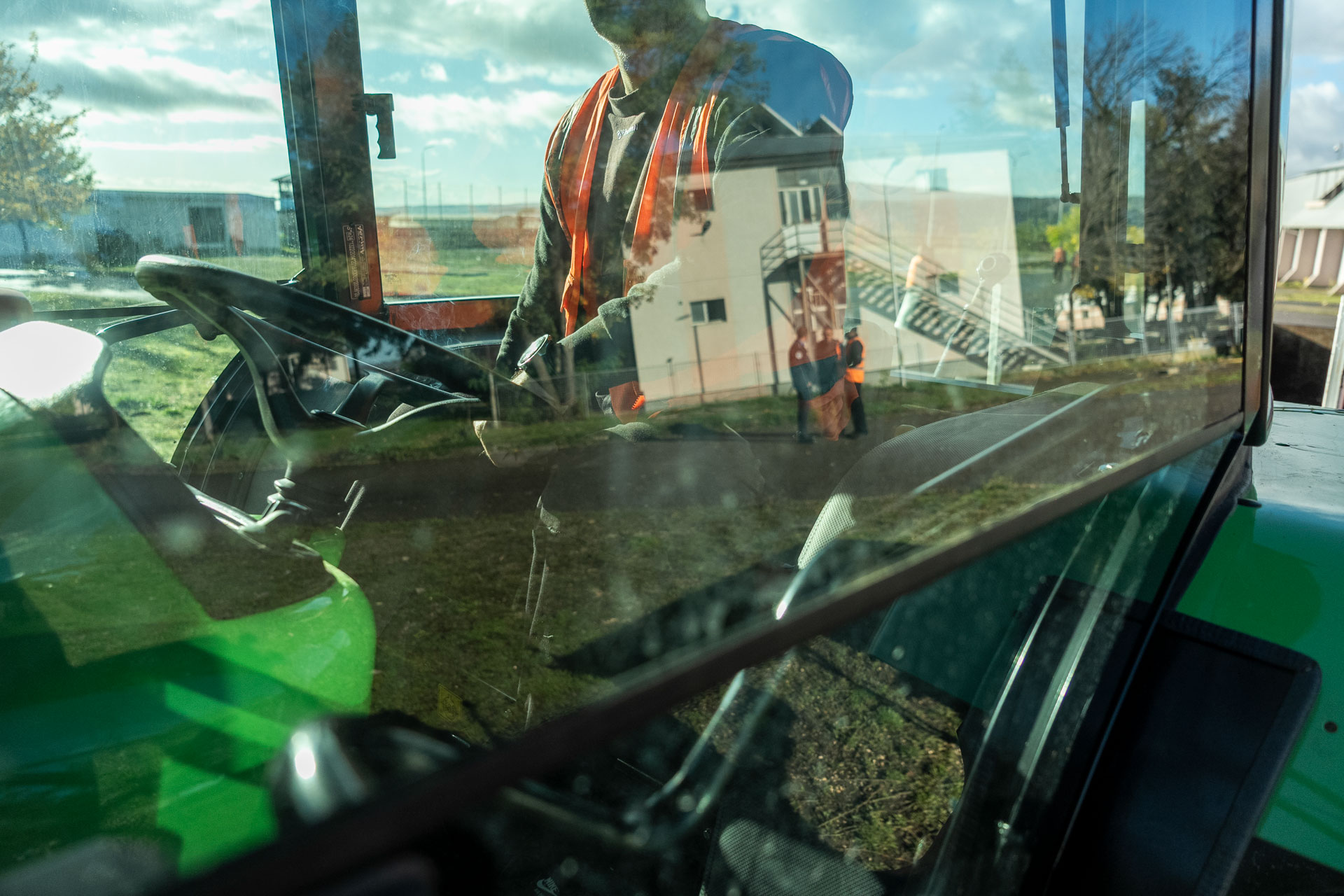
Convicts who cannot work outside the Smrekonica Center are engaged in work within the institution. Photo: Ferdi Limani / K2.0
In Norway, the prison system is structured similarly, but emphasis is placed on the principle of normality — prison life should resemble life outside as much as possible. There are three levels of security: high-security, medium-security and open prisons. At the first level, such as Halden Prison, security is strict but not oppressive; convicts live in individual rooms and follow educational programs, therapy or structured work, in daily contact with correctional officers trained for rehabilitation rather than punishment. In open prisons, such as Bastøy, convicts live in huts, work in agriculture or attend classes, move freely on the island and prepare for life outside based on trust and responsibility. Research in Norway shows that vocational training within prisons has contributed to higher employment levels after release, demonstrating its effectiveness in the reintegration of prisoners.
A scientific paper authored by Lena Doxell in Sweden emphasizes that educational training in open prisons directly contributes to reducing recidivism, that is, the likelihood of reoffending. Norway has an extremely low recidivism rate of around 20%, compared to the United States, where it exceeds 75%. In the U.S., prisons have extremely high security — sometimes considered extreme — and restrictions on convicts are significantly stricter.
Hundreds of kilometers away from the Scandinavian countries, at the Smrekonica Center, some convicts must wait to receive a work permit outside the institution. About 70 convicts are not yet beneficiaries of this program because, for various reasons, they have not met the conditions required to work outside.
While waiting, they aim to prepare for life outside by working within Smrekonica.
Work inside centers too
With every step he takes, he is surrounded by the fields he has worked on. He raises his head to the sky, checking the chances of rain to finish off the job.
“There was a whole wheat field here; we harvested about seven thousand kg of flour. Now I am waiting to see if it rains, because they said it would, and then I will plow it with a tractor,” said Dardani, who did not want to be identified by his real name, as he pointed to the fields where a large amount of potatoes had recently been harvested. The many trees and vegetables he has planted with other convicts are visible throughout the yard.
He feels proud that he manages to have small breaks from his daily routine to dedicate himself to the good of the community.
“Look, this field was planted with onions, half a hectare. We worked on it all,” he continued. All the fruits and vegetables planted are then used to meet the needs of the Smrekonica Center and other centers.
From 9:00 in the morning until their break at 12:00, they are engaged solely in agricultural work. The greenhouse, located in the village of Smrekonica near several houses and close to the main road, is his main workplace, where he focuses entirely on his tasks. “Why would I risk losing these benefits and delaying my release? My family is waiting for me, and I want to contribute to returning to my life,” continued Dardani, 40, as he showed the cucumbers planted in the greenhouse that already weigh several kilograms.
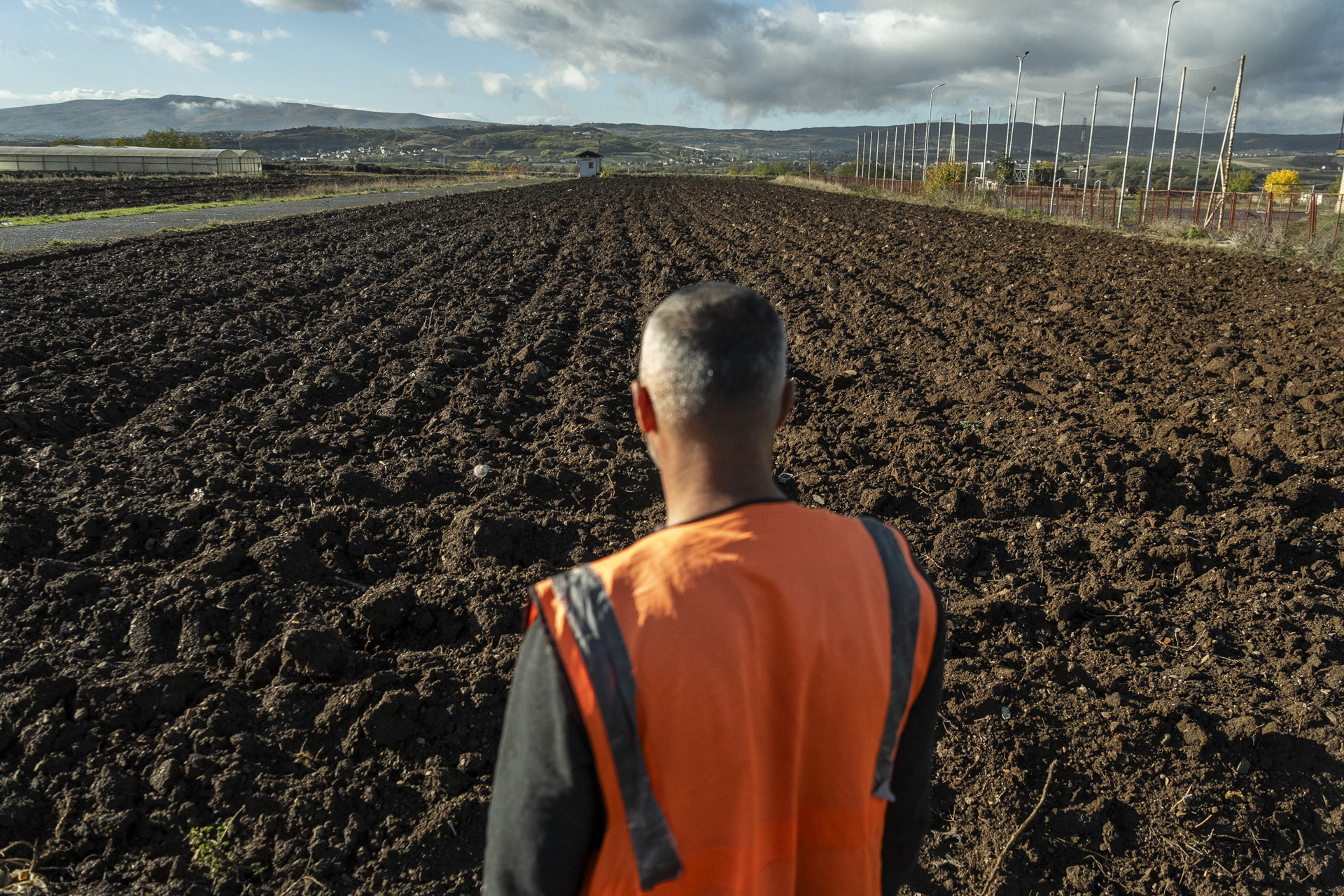
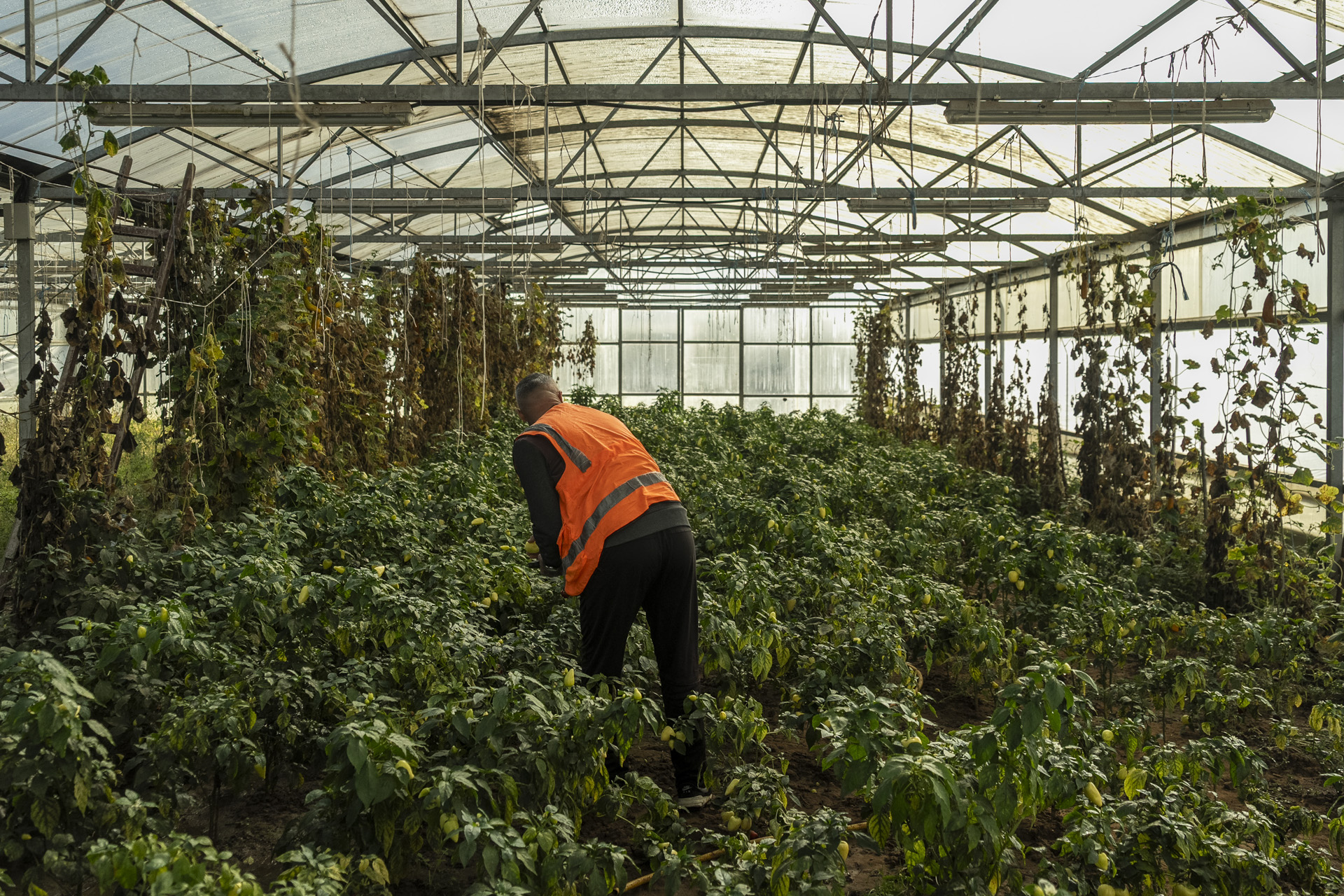
All the fruits and vegetables planted are used to meet the needs of the Smrekonica Center and other centers. Photo: Ferdi Limani / K2.0
Hamza, the head of legal affairs at the Smrekonica Center, says that the convicts never hesitate to work. “No one refuses. I think work is the rehabilitation therapy for the convicts; through work, they get through the day much more easily,” he said.
Dardani says that he approaches the agricultural work inside the center with the same zeal he used to have at home. Recently, however, his motivation has increased, fueled by the expectation that he can continue his work elsewhere. He has submitted a request to exercise the right to work outside the institution and has found a restaurant in Fushë Kosovë where he intends to work until his full release. “I have good manners; now I’m just waiting for the answer. Until they decide, I’m busy with work inside,” said Dardani.
He has been in prison since 2021 — initially in the Hajvali Detention Center, then in Dubrava, and now in Smrekonica. However, he considers the difference between the two centers to be very large.
“You see life, the road, the cars. You are close to freedom. In other places, you see life on the edge; here, you see it differently. The difference is like day and night. Anyone coming from Dubrava openly says how they would come home here,” he said.
This difference is also emphasized by guard Faton Rexhepi, who has been part of the Kosovo Correctional Service since 2003. For 17 years, until 2020, Rexhepi served at Dubrava Prison, before being transferred to Smrekonica.
“Every convict in this institution is one step away from freedom. They see it with their eyes.”
Faton Rexhepi, prison guard.
“It’s easier here; orders are followed more readily because when you ask them to go out and do something, they respond more easily. They feel freer, and there isn’t constant supervision,” he said. He added that although the staff often conduct various inspections, they rarely find anything illegal. The Smrekonica Center currently has 56 staff members: 38 guards and 18 administrative personnel. According to Rexhepi, the convicts are aware of the benefits they have, so none are interested in returning to a center where the conditions are much more challenging.
“Every convict in this institution is one step away from freedom. They see it with their eyes. During their work, they notice the outside world, the movements beyond the prison,” he said, adding that in his discussions with the convicts, they often share their plans, their reintegration into society and their goal of continuing life beyond the mistakes they have made.
This is precisely the goal of such open centers. In Norway, state-designed practices are implemented by staff, who are valued as the first point of communication with prisoners. As a result, these policies have a direct impact on resocialization.
Sociologist Jeton Brajshori, however, also emphasizes the importance of mental health and psychological training that prisoners must continue after their release. “They face prejudice, stigma and social isolation. Stigmatization often pushes these people to remain on the margins of society, forever labeled as ‘criminals,’” he said.
Some convicts work outside in various professions, while others work inside the Smrekonica Center. When the clock strikes 5:00 p.m., however, they continue to live together — playing cards, working out and spending time with one another. Inside the institution, where windows lack protective grilles or barbed wire and the noise of cars can be heard from the yard, convicts are faced with a life outside — a reality that everyone dreams of returning to as soon as possible.
Feature image: Ferdi Limani / K2.0
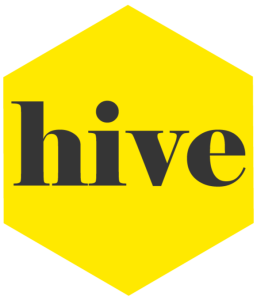 Want to support our journalism? Become a member of HIVE or consider making a donation. Learn more here.
Want to support our journalism? Become a member of HIVE or consider making a donation. Learn more here.









